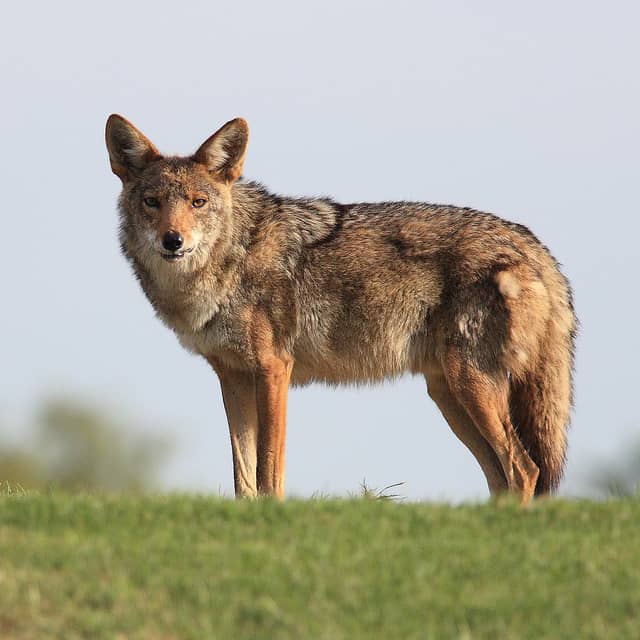Consider the Coyote
Montana Fish, Wildlife & Parks 01.14.13

Consider the coyote. In real life it has been shot, trapped, poisoned. In fantasy land Wile E. Coyote is regularly burnt to a crisp, squashed flat, or at the bottom of a canyon all in the pursuit of the Road Runner. Even the American humorist and author Mark Twain disparaged the coyote as “a long, slim, sick and sorry-looking skeleton…. a living, breathing allegory of Want.”
It gets no respect, yet it survives.
Lots of people have a low opinion of the coyote’s cousin, the wolf. But lots of people defend it, and spend money trying to see and hear one.
No one, or at least not many, defend, love or want to hug a coyote. No pheasants this year? Could be the coyote. Deer numbers down? It’s the darn coyote. Fewer ducks in the fall? Coyotes are out and about. Much of the blame for wildlife population declines, however, does not rest solely or even mostly on the coyote’s shoulders.
Although meat is the basis of a coyote diet, the majority of the meat comes in the form of small mammals, like rabbits and hares and lots of rodents, such as ground squirrels, voles and mice. In fact coyotes can be mice-eating machines. Three cheers, please.
The coyote originated in the West. The first written description of the coyote came in 1804 in what’s now South Dakota by William Clark, of the Lewis and Clark expedition. He called it a prairie wolf.
Mark Twain’s account came in 1870 as he traveled by stagecoach from the Midwest: “Along about an hour after breakfast we saw the first prairie dog villages, the first antelope, and the first wolf. If I remember rightly, this latter was the regular coyote (pronounced ky-o-te) of the farther deserts.”
Our ancestors were pretty successful in wiping out the wolf, but they lost the war on coyotes, though they sure tried.
From the Sept. 7, 1911, Great Falls Tribune comes the following bounty report: “The (bounty) certificates showed a total of 124 coyotes killed in the vicinity of Cascade and accompanying the certificates were delivered the 124 coyote heads… After being inspected by the clerk and recorder these heads were destroyed by burning in the furnace of the courthouse.”
Each coyote head was worth $3.
Now, the animal lives throughout North and Central America, even urban areas. One Ohio State University scientist estimates 2,000 coyotes live in Cook County, Ill., which comprises Chicago and its suburbs. Two coyotes have been videoed outside the gates of Wrigley Field. Cubs fans, no doubt.
Unlike other predators, coyotes survived and expanded their range because they adapted. In suburbs they switched from eating mice and livestock, to pet food and pets.
In ranching circles, the war on coyotes will probably continue forever. Despite millions of dollars spent on trapping, shooting and the use of poisons, the coyote survives, even thrives.
Indeed, killing coyotes is kind of like mowing the lawn, says one researcher and not disrespectfully, it just stimulates vigorous new growth.
Most livestock producers are conservationists. Although they would like to see the coyote eliminated from that small part of the earth were sheep and goats are raised, they, probably more than most, realize the futility.
The coyote abides.

